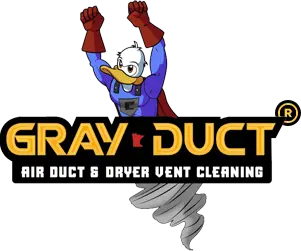Ductwork leaks can significantly impact your home’s heating and cooling efficiency. These leaks allow conditioned air to escape, leading to increased energy bills and uneven temperatures throughout your home. Addressing ductwork leaks promptly can enhance your HVAC system’s performance and provide a more comfortable living environment.
Common Causes of Ductwork Leaks
Understanding the common causes of ductwork leaks can help you prevent them and maintain an efficient HVAC system. Here are the primary reasons your ductwork might develop leaks:
1. Poor Installation:
Incorrect installation is a frequent cause of ductwork leaks. Improperly sealed joints and connections can lead to gaps where air can escape. Ensure that your ductwork is installed by our professionals to minimize the chance of leaks.
2. Wear and Tear:
Over time, ductwork materials can degrade due to age and regular use. Metal ducts can rust, and flexible ducts can become brittle and crack. Regular inspections and maintenance can help identify wear and tear before they lead to leaks.
3. Pest Damage:
Rodents and other pests can infiltrate your ductwork, causing holes and breaches. Pests often chew through ductwork material, creating paths for air to escape. Keeping your home free of pests can prevent this type of damage.
4. Vibration and Movement:
The natural vibration and movement of your HVAC system can loosen duct connections over time. Loose fittings can result in leaks. Regularly checking and tightening connections can help mitigate this issue.
5. Construction and Renovation:
During home construction or renovation, ductwork can be accidentally damaged. Nails, screws, or other construction tools can puncture ducts. Make sure to inspect your ductwork after any major construction projects.
Signs You Have a Ductwork Leak
Recognizing the signs of ductwork leaks is essential for timely repairs and maintenance. Here are common indicators that you may have a ductwork leak:
1. Uneven Heating or Cooling:
If some rooms in your home are significantly warmer or cooler than others, it could indicate a ductwork leak. The leak allows conditioned air to escape, preventing it from reaching all areas evenly.
2. Increased Energy Bills:
A sudden spike in your energy bills without a corresponding increase in usage suggests a possible ductwork leak. Escaping air forces your HVAC system to work harder, leading to higher energy consumption.
3. Poor Airflow:
Weak airflow from your vents can signal a leak. When ducts are compromised, the air doesn’t move efficiently through the system, resulting in reduced airflow.
4. Unusual Noises:
Whistling or hissing sounds coming from your ductwork can indicate a leak. These noises often result from air escaping through small holes or gaps.
5. Dust and Debris Buildup:
Excessive dust and debris around your home, especially near vents, can be a sign of leaks. Leaks allow dirt and particles to enter the duct system, distributing them throughout your home.
6. Visible Damage:
Inspect your ductwork for visible signs of damage like holes, gaps, or disconnected sections. Visible damage is a clear indicator that repairs are needed.
By identifying these signs early, you can take action to address ductwork leaks and maintain the efficiency and comfort of your home.
Steps to Detect Ductwork Leaks
Detecting ductwork leaks requires a systematic approach. By following these steps, you can locate and address leaks effectively:
1. Visual Inspection:
Begin by visually inspecting accessible ductwork for any signs of damage, such as holes, gaps, or disconnected sections. Use a flashlight to examine all visible areas thoroughly.
2. Check for Airflow Issues:
Turn on your HVAC system and check for consistent airflow from all vents. Weak or uneven airflow can be an indication of a leak. Pay attention to rooms that feel significantly cooler or warmer than others.
3. Smoke Test:
You can use a smoke pencil or incense stick to detect leaks. Light the stick and hold it near duct seams and connections. If the smoke wavers or gets sucked into a gap, you likely have a leak at that spot.
4. Pressure Test:
A more advanced method is to conduct a pressure test. This involves sealing all vents and pressurizing the duct system using specialized equipment. The resulting pressure drop can help identify the presence of leaks.
5. Listen for Noises:
As your HVAC system runs, listen for unusual noises like whistling or hissing around your ductwork. These sounds may signal air escaping through leaks.
6. Call Professionals:
If you suspect a leak but can’t locate it, contact our professionals. They have the tools and expertise to detect leaks accurately and efficiently.
By following these steps, you can identify ductwork leaks and take action to address them.
How to Address and Repair Ductwork Leaks
Once you’ve detected ductwork leaks, it’s crucial to address and repair them promptly. Here are some methods to fix these leaks:
1. Seal Small Gaps and Holes:
Use mastic sealant or aluminum foil tape to seal small gaps and holes in your ductwork. Avoid using regular duct tape, as it degrades over time. Apply the sealant or tape around the leak, ensuring a secure and airtight seal.
2. Replace Damaged Sections:
If you find large or multiple leaks, it may be more effective to replace the damaged sections of ductwork. Our professionals can help with this process, ensuring a proper fit and seal for the new sections.
3. Insulate Ducts:
Adding insulation around your ductwork can help prevent future leaks and improve overall efficiency. Insulated ducts are less likely to suffer damage from environmental factors, reducing the risk of future problems.
4. Secure Loose Connections:
Tighten any loose connections and ensure that all joints are properly fitted. Use sheet metal screws and clamps to secure connections and prevent movement that could cause leaks.
5. Regular Maintenance:
Schedule regular ductwork cleaning and maintenance with our technicians to keep your ducts in optimal condition. Regular inspections can catch potential issues before they become significant problems.
By addressing and repairing ductwork leaks promptly, you can maintain an efficient and effective HVAC system.
Conclusion
Ductwork leaks can lead to increased energy bills, uneven temperatures, and reduced HVAC efficiency. Recognizing the common causes and signs of these leaks allows you to take timely action. Proper detection and repair methods are essential for maintaining a well-functioning duct system. Regular maintenance and inspections play a crucial role in preventing leaks and ensuring your system operates at its best.
Addressing ductwork leaks benefits your home’s comfort and energy efficiency. Ensuring a well-sealed duct system reduces air loss, leading to lower energy bills and a more consistent indoor climate. By following the outlined steps, you can effectively detect and repair leaks, maintaining a healthy and efficient HVAC system.
For expert ductwork cleaning in Eden Prairie, Minnesota, trust Gray Duct Technologies. Contact us today to schedule an appointment and keep your home’s air quality and efficiency at its best.



